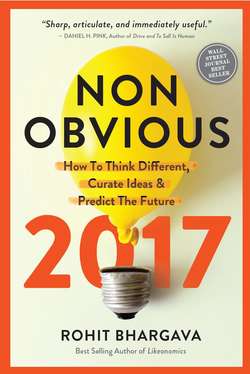Читать книгу Non-Obvious 2017 Edition - Рохит Бхаргава - Страница 28
На сайте Литреса книга снята с продажи.
How to Be Curious
ОглавлениеBjarni Herjulfsson could have been one of the most famous explorers in the history of the world.
Instead, his life has become a cautionary tale about the historic consequences of lacking curiosity. In the year 986, he set off on a voyage from Norway with a crew to find Greenland. Blown off course by a storm, his ship became the first European vessel in recorded history to see North America.
Despite his crew pleading to stop and explore, Herjulfsson refused and guided his ship back on course to eventually find Greenland. Years later, he told this tale to a friend named Leif Eriksson who became inspired, purchased Herjulfsson’s ship and took the journey for himself.
As many of us learned in grade school, Eriksson is now widely remembered as the first European to land in North America—nearly 500 years before Christopher Columbus. Herjulfsson, on the other hand, has been mostly forgotten and his story illustrates one of the most compelling facts about curiosity: it is a prerequisite to discovery.
Being more curious means asking questions about why things work the way they do and embracing unfamiliar situations or topics with a sense of wonder.
Humans are naturally curious. The challenge is to continually find ways to allow yourself to explore your curiosity without it becoming an ongoing distraction.
When noted chef and food pioneer Ferran Adrià was once asked what he likes to have for breakfast, his reply was simple: “I like to eat a different fruit every day of the month.”
Imagine if you were able to do that with ideas.
Part of being curious is wanting to consume stories, ideas and experiences to earn greater knowledge of the world, even if that knowledge doesn’t seem immediately useful.
